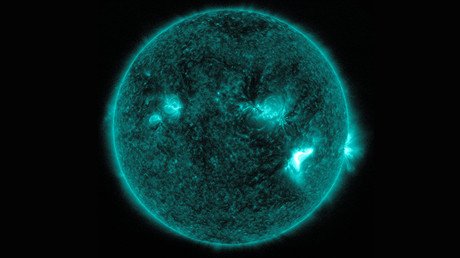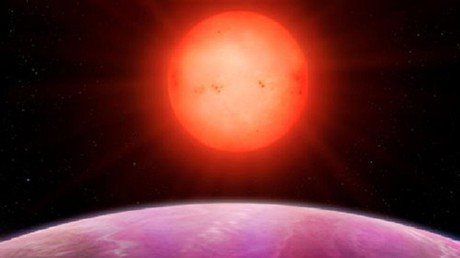Out of this world? Scientists create superionic ‘space’ water

Scientists have created a new form of water, called superionic ice, which is both a solid and a liquid. The “strange” matter doesn’t exist anywhere on Earth, but could be found on Uranus and Neptune.
Researchers from Lawrence Livermore National Lab at the University of California carried out a series of “laser-driven shock-compression experiments” and shared their findings in a study published in Nature Physics journal on Monday.
The superionic ice is “a really strange state of matter,” the study’s lead author Marius Millot told the New York Times. ‘Superionic’ refers to water that has properties of both solid and liquid, which occurs when water is placed under extreme pressure and heat.
“These are very challenging experiments, so it was really exciting to see that we could learn so much from the data - especially since we spent about two years making the measurements and two more years developing the methods to analyze the data,” Millot said.
Fish genes may unlock secret to curing paralysis in humans – study https://t.co/6rIriD1KzQpic.twitter.com/m9qamTy8i6
— RT (@RT_com) January 16, 2018
The ice was created by compressing water between two diamonds at a level of pressure 25,000 times greater than air on Earth. The water turns into a kind of ice called ice VII, which is solid at room temperature, and 60 percent denser than water. The compressed ice was then hit with a laser light, causing intense shockwaves, as well as increasing temperatures to thousands of degrees.
The heat melts the bonds between hydrogen and oxygen atoms, while the high pressure allows for the oxygen atoms (which are heavier than hydrogen) to be kept in a solid stack as the liquid hydrogen ions flow through.
“Our experiments have verified the two main predictions for superionic ice: very high protonic/ionic conductivity within the solid and high melting point,” Millot said. “Our work provides experimental evidence for superionic ice and shows that these predictions were not due to artifacts in the simulations, but actually captured the extraordinary behavior of water at those conditions.”
Co-author Sebastien Hamel descried the findings as a “turning point.”
‘We were told this wasn’t possible’: Scientists create ‘lightning in a bottle’ for 1st time (VIDEO) https://t.co/CXUQQhJPMP
— RT (@RT_com) November 16, 2017
In 1988, scientists predicted these conditions – extreme pressure and high temperature – could lead to the formation of the superionic ice.
It’s been theorized that the strange matter could exist on both Neptune and Uranus.
The superionic ice “could be stable under the expected extreme conditions inside Neptune and Uranus,” the study found. The findings could even provide an explanation for Uranus’ and Neptune’s off-center magnetic fields, which could be caused by the planets’ magnetic fields being generated inside superionic ice in their mantles.
Think your friends would be interested? Share this story!















